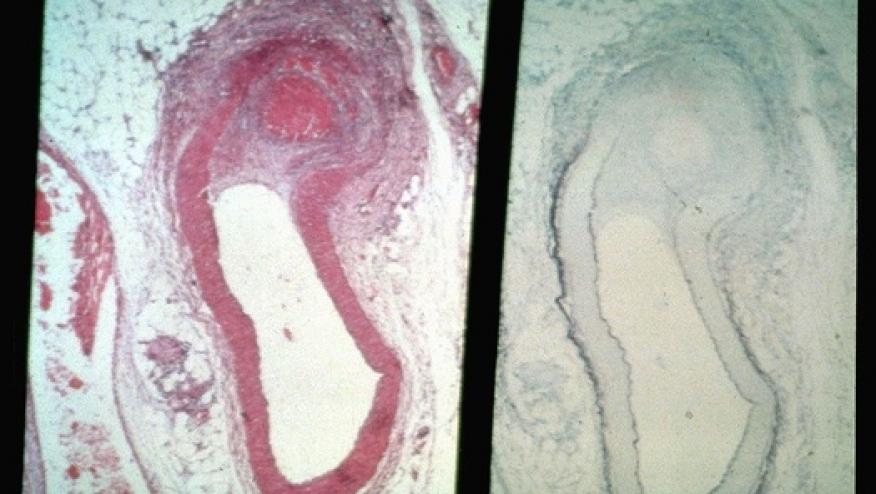Polyarteritis Nodosa: Clinical Features and Outcomes Save

A multinational study of polyarteritis nodosa (PAN) through the international GLOBAL-PAN network shows PAN to be a complex, multisystem disorder with a high risk of relapse and low risk of death (11% at 10 years).
A total of 358 PAN patients were recruited (1990 to 2020) from nine countries (Europe, Japan, North America) meeting the European Medicines Agency classification algorithm. Exclusions included 12 cases related to hepatitis B virus, two with monogenic diseases mimicking PAN, 16 with deficiency of adenosine deaminase 2 enzyme syndrome and 11 with familial Mediterranean fever.
PAN patients (174 female:184 male), including those with systemic PAN (sPAN, n = 282) and cutaneous PAN (n = 76). Pediatric onset PAN was seen in 25 cases. PAN features included:
- Age at diagnosis was 44.3 ± 18.1 years (mean).
- Constitutional symptoms in 71.5%
- Cutaneous involvement 70.5%
- Musculoskeletal findings 69.1%
- Neurologic features 48%
- Gastrointestinal involvement 52.2%
- Proteinuria (>400 mg/day) 11.2%
After a median followup of 60, relapse occurred in 48.5% of patients. The 1-, 5- and 10-year survival rates for sPAN were 97.1%, 94.0%, and 89.0%, respectively.
Independent predictors of death for systemic PAN included: age ≥65 years at diagnosis, serum creatinine at diagnosis >140 μmol/L, gastrointestinal manifestations, and central nervous system (CNS) involvement.
PAN remains a complex, multifaceted disease to both diagnose and manage.










If you are a health practitioner, you may Login/Register to comment.
Due to the nature of these comment forums, only health practitioners are allowed to comment at this time.